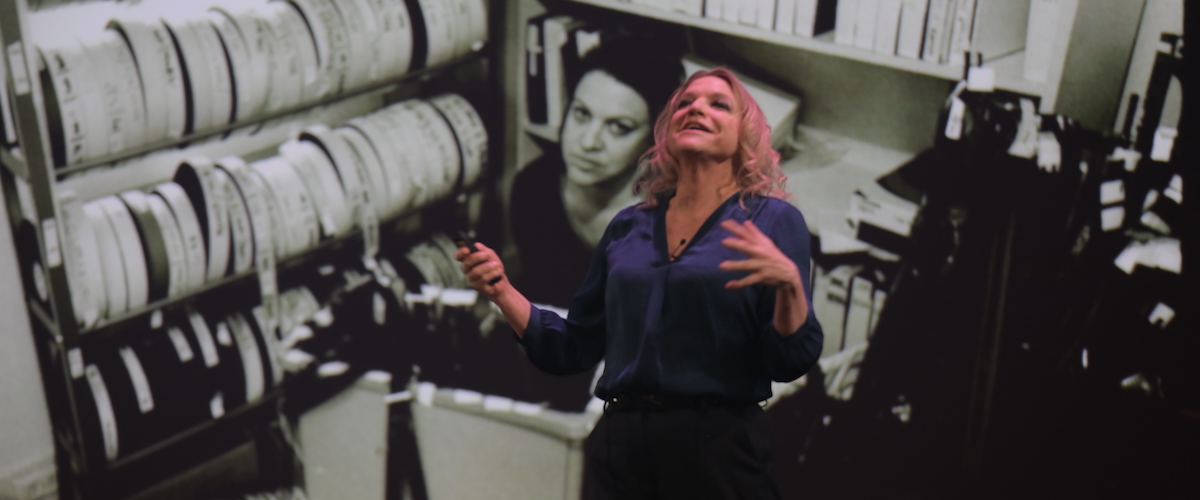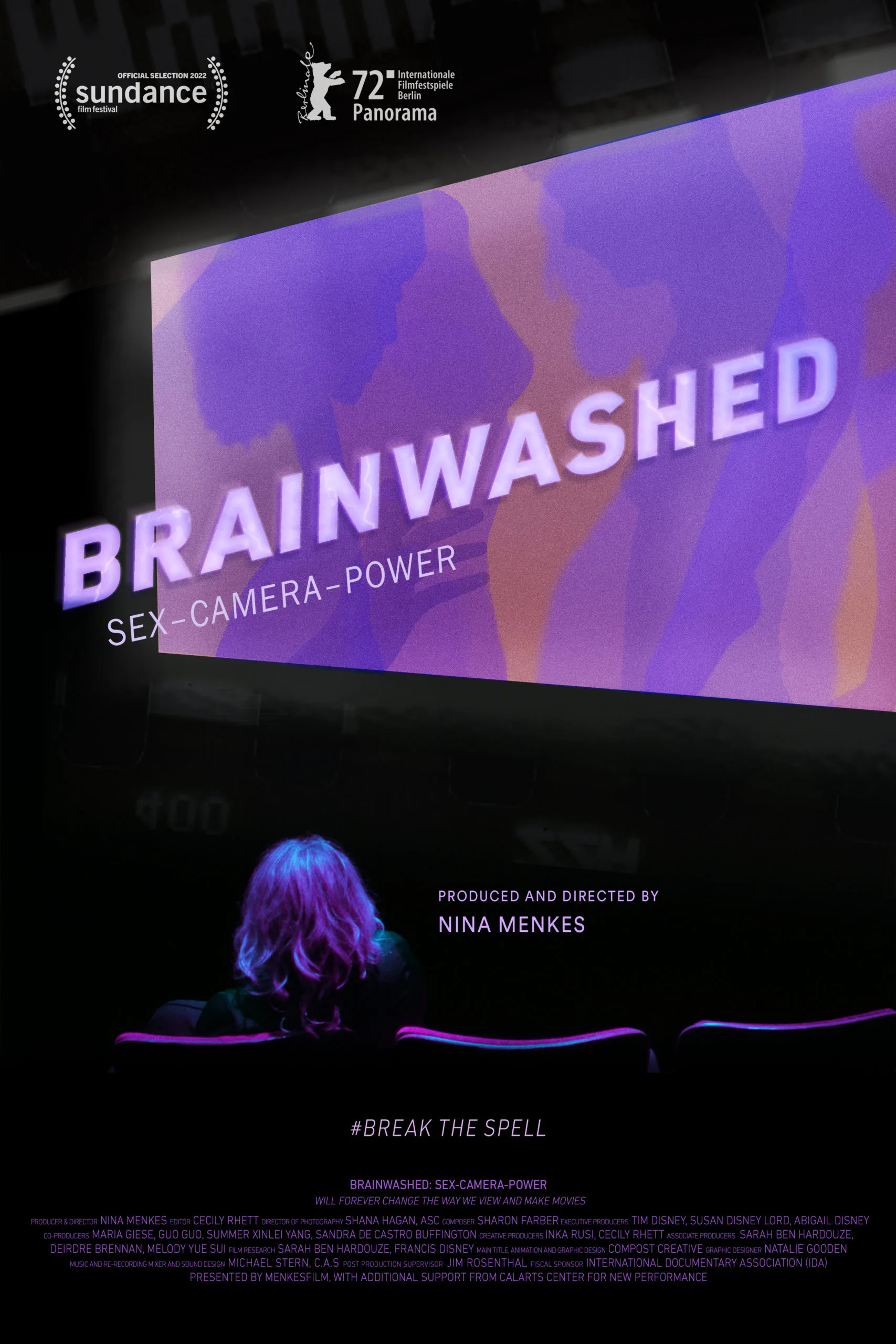“It’s built on my sadness. It’s built on my struggle,” says director Nina Menkes as she shares the impetus behind her latest film, “Brainwashed: Sex-Camera-Power.” This personal connection to the material is evident in every frame of the documentary. Unfortunately, it also covers the film in a thick layer of confirmation bias. That there is a gender imbalance in contemporary cinema is fact, but this film is not interested in a nuanced exploration of the why or the how. Instead, Menkes wants to prove her own tenuous narrative so badly that she relies on bad faith arguments, ahistorical information, and cherry-picked scenes used out of context.
The thesis of the doc is that film grammar is built on gendered shots that allow men to be subjects and women to be objects. This grammar then feeds into our perception of ourselves in dangerous ways, including in the discriminatory hiring practices in Hollywood. While there may well be a kernel of truth somewhere in this hypothesis, there is surely a better way to demonstrate it than to distort facts and analyze film as if it exists in a vacuum outside of other media (not to mention a myriad of socio-political factors).
For one, film grammar did not spring up on its own. It’s rooted in the arts that came before it; painting, theater, photography. None of this is mentioned. Much of the examples Menkes analyzes are from the last ten years, without first laying the groundwork within early cinema. In fact, she does not even mention Alice Guy-Blaché’s foundational 1896 narrative film “The Cabbage Fairy” until 37 minutes into the documentary and Lois Weber, who is credited with pioneering the split-screen, is not mentioned at all. Her exploration of early cinema, male or female directed, is cursory at best (with most of her analysis of Old Hollywood focusing solely on one scene in Orson Welles’ “The Lady from Shanghai”), and ahistorical at worst. An assertion that the main audience for films from the beginning was cis-heterosexual men ignores the many women working in the silent era who made films for women, as well as the Hollywood studio system’s plethora of films targeted at women.
Many of the film clips chosen to make her point are analyzed in isolation from the rest of the films in which they are from. For example, she demonstrates the man as subject, woman as object shot through a scene from “Phantom Thread,” insisting that it implicitly implies that Daniel Day-Lewis’ Reynolds Woodcock has power over Alma (Vicky Krieps). However, had she assessed the clip within the context of the entire film, she would see how director Paul Thomas Anderson then flips this visual language, along with the power structure of Woodcock and Alma’s relationship by the end of the film.
A similarly misconstrued analysis of the opening sequence of Julia Ducournau’s “Titane” is used to show how women directors also use this objectifying film grammar to degenerate women. Again, this clip is out of context, and Menkes does not explore how the main character in the film subverts this predatory gaze by herself becoming a killer of lecherous men. Yet, later in the doc she praises “Promising Young Woman” for the exact same kind of subversion. She also mentions the lack of women directors in the Cannes Film Festival without ever mentioning Ducournau’s win (or Jane Campion’s for that matter, whose entire contribution to cinema is ignored).
Another section in which Menkes discusses how sexualized women are shot in fragmented body parts (breasts, legs, buttocks) in isolation from their bodies as a whole makes a fair point about a well-documented pattern. When she attempts to expand on this by showing a scene from “Magic Mike” in which she claims the men are sexualized in a shot that includes their whole bodies, she chooses a scene that confirms her assertion, as if the iconic scene towards the end of the film where Matthew McConnaughy strips down to his skivvies and his fragmented, spread-eagle legs fill the frame as a woman throws money at them doesn’t exist.
This bad faith finds its way into some of the few films directed by women that are discussed at length. In a baffling sequence discussing Kathryn Bigelow’s historic Best Picture and Best Director wins at the Oscars for “The Hurt Locker,” Menkes asserts that the film only won because it is about men blowing men up and that its achievement was less because Bigelow was at the helm, but because all of the main crewmembers were men. A blow to auteurism, sure, but then why not discuss any of the women who worked as editors and screenwriters throughout the history of American cinema?
In fact, although Eliza Hittman, Joey Soloway, and Penelope Spheeris all appear on camera and share illuminating anecdotes about their experiences working in film, no footage of their work is shown. However, excerpts from one on-camera interviewee, Julie Dash’s “Daughters of the Dust,” is used to prove that a new set of tools is necessary for truly innovative cinema. Showing the other directors’ work as well would only serve to make that point even stronger. Few other women’s films are analyzed at all, aside from Menkes’ own films. A shot from Barbara Loden’s “Wanda” is used completely out of context to illustrate a harrowing story of sexual harassment and Agnès Varda’s “Le bonheur” is only mentioned in the context of how it may have inspired a scene in “My Own Private Idaho.”
Perhaps the worst example of taking a film clip out of both the context of its film and within its filmmaker’s filmography comes after a discussion of “Mandingo.” Menkes prefaces this sequence by quoting Roger Ebert’s review in which he calls the film “racist trash,” but also insisting that it is “the exception that proves the rule.” She insists the way the camera films Black star Ken Norton as a sexual object and white actress Susan George as the subject proves this kind of film grammar is less about sex and more about power. She follows this with a cut to Ana Lily Amirpour’s “A Girl Walks Home Alone at Night” as an example of a film that subverts power between genders. Having these two scenes back-to-back without consideration of critical discussion of anti-Blackness around Amirpour’s second film shows exactly why it’s a folly to discuss films and scenes as if they exist in a void.
Along with taking film clips out of context, no critical or cultural discussions of these films are mentioned. May Hong HaDuong, director of the UCLA Film and Television Archive, mentions that we can still enjoy the canon, but that we must acknowledge their problematic elements. Yet, Menkes discussion of something like “Sixteen Candles” or “The Breakfast Club” is treated as if the films were released and never reassessed for their problematic elements, years later.
Like Molly Ringwald’s powerful essay about those films, one of the few sequences that works well is when “After Hours” star Rosanna Arquette discusses the scene in which her naked, dead body is discovered by star Griffin Dunne. Arquette expresses regret for taking part in the scene in retrospect but didn’t think anything of it at the time. The doc could definitely have benefited from more of this kind of insightful, introspective interview. But even Arquette’s story is only given a brief minute or so in the film’s runtime before Menkes moves on to another half-baked film analysis or illogical reach. Her dissection of why Ana De Armas’ character in “Blade Runner: 2049” is named “Joi” is absurd.
The documentary begins with Laura Mulvey discussing her landmark 1973 essay Visual Pleasure and Narrative Cinema. In an on-camera interview, Mulvey recalls, “I only actually used ‘the male gaze’ once in the essay, but it has become its dominant memory.” Yet, it is this very phrase that “Brainwashed” latches on to. It is this idea to which it anchors every aspect of its film analysis. Anything that doesn’t fit into Menkes’ narrow thesis is thoroughly ignored, and much of what does is twisted and cropped in order to make it fit.
As someone who has spent most of my professional life watching and studying the work of female directors, I know deep in my bones how important this subject is. I have seen how a filmmaker’s identity can alter how they see the world and thus how they reflect it. The erasure of women’s contribution to cinema, the discrimination faced by women who have broken through, and the systematic exclusive of women from working within Hollywood deserves to be understood and studied. This is all true. But in order to do this subject—and these women—justice, there is a need for a clear-eyed reckoning. Unfortunately, “Brainwashed” does not deliver that, instead favoring disingenuous rhetoric and often patently false information to serve its predetermined narrative.




















